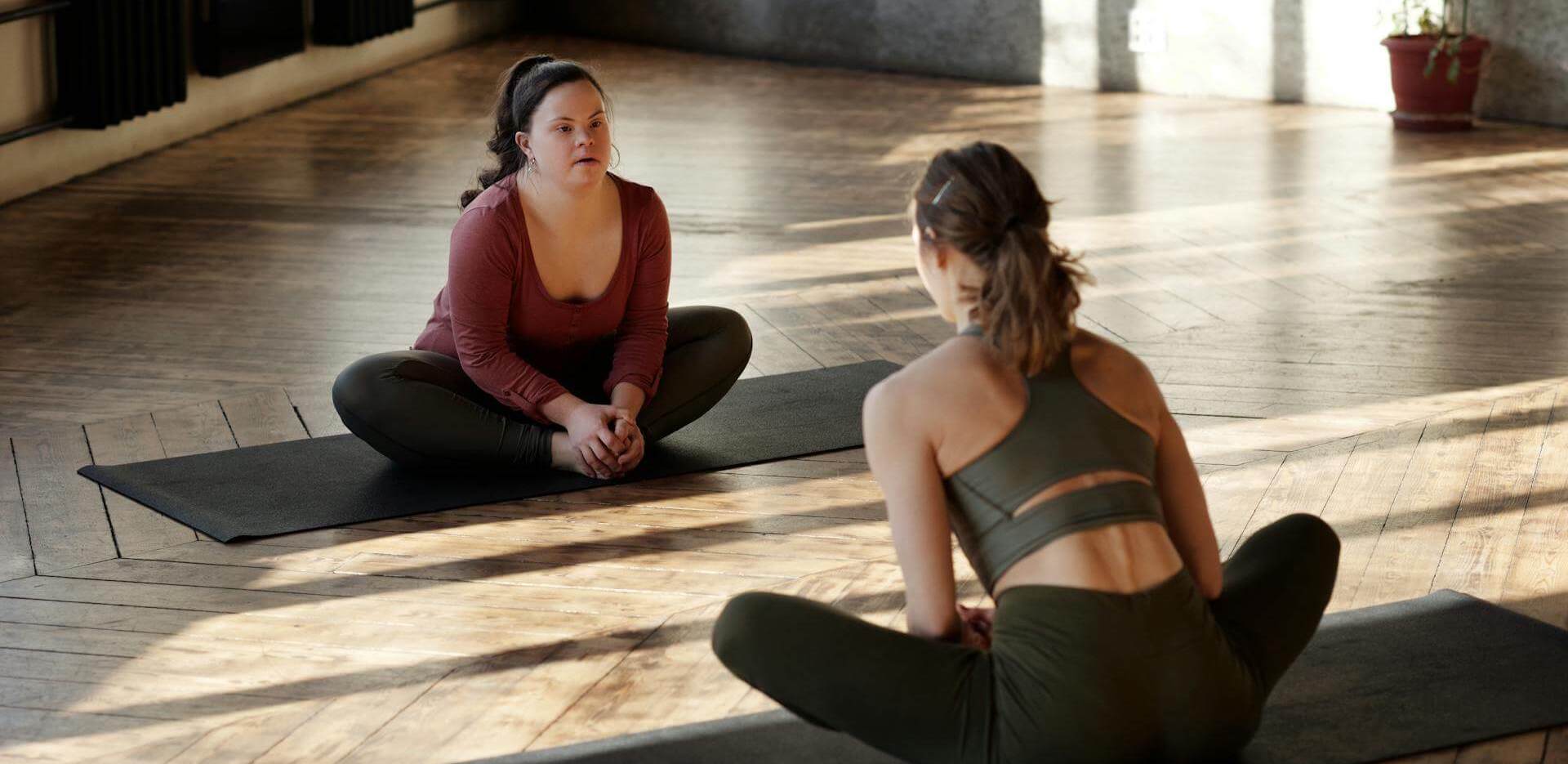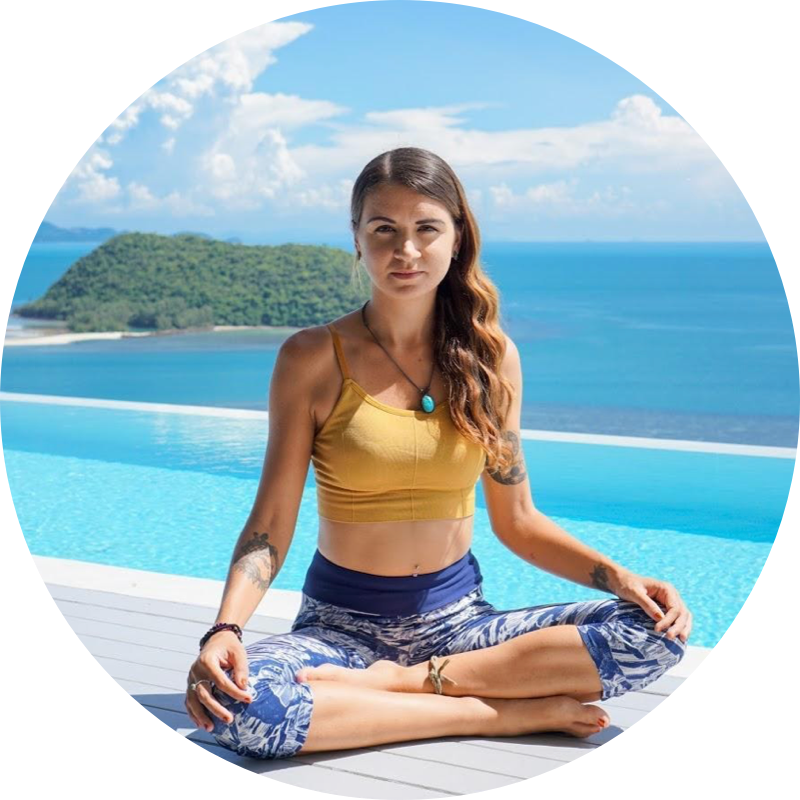
How To Teach One-On-One Yoga Classes - Top Tips For Teaching Private Yoga
If you've recently graduated from yoga teacher training, you might feel just about prepared to teach group classes. Private classes, however, probably feel like a minefield.
Most yoga teacher training programs focus solely on teaching group yoga classes, and for good reason: group classes are hugely popular.
But as you advance in your career, you will likely start exploring other ways to share your knowledge, such as teaching students one-on-one.
Whether you've encountered an opportunity to teach private yoga or are considering transitioning to this teaching style, read on.
I'm sharing everything you need to know about teaching one-on-one yoga classes, allowing you to approach private yoga with knowledge and confidence.
The Key Difference Between Group Yoga And Private Yoga Classes
In group yoga classes, you teach multiple people at once, often with students of varying levels.
While you offer variations and adjustments as needed, personal attention in group classes is limited.
However, in a private yoga class, you focus solely on one student. The attentiveness is high as you tailor the session to your student's unique needs and ability.
I find that private yoga classes tend to be less structured than group classes. While I always have a class plan, when you're teaching just one person, that plan will likely change.
Here's why…
The beauty of private yoga is that we can give our students exactly what they need on that day.
For example, let's say you planned a strength-building session, but your student had a tiring week. So you might switch to a calming yin session, which would benefit their current physical and mental state more.
By approaching your private class in a flexible and adaptable way, your student benefits more from the practice.
Benefits Of Teaching Private Yoga Over Group Yoga
Now, let's talk about the benefits of teaching private yoga classes.
One-on-one yoga classes allow us to make a bigger difference in our student's lives by giving them a deeper yoga experience.
You can set your students realistic and achievable goals and create a personalised plan to help them reach them.
As a result, you might feel a more profound satisfaction teaching private yoga classes.
Other benefits include:
1. Ability to earn more money - You set your own rates and earn a higher per-session fee than group classes.
2. Greater flexibility in scheduling - You can arrange private classes around your schedule.
3. Convenient location - You can have your students come to your own home, eliminating travel costs and times.
4. High client retention rate - By offering custom packages for private sessions, such as multiple-session discounts, you can encourage your students to commit to a series of classes, ensuring a steady income stream.
How To Set Up For A One-On-One Yoga Class
One key thing to decide when teaching private yoga classes is the location. Some yoga teachers prefer to teach at their students' homes, while others have their students come to their houses.
Either option is fine, so I recommend choosing what you feel most comfortable with.
If you decide to teach at your home, create a 'mini home studio' rather than just teaching students in your living room or kitchen. A spare room is perfect for turning into a dedicated yoga studio.
If you decide to travel to your students instead, ensure they have a suitable space at home as part of the onboarding process.
Once you decide on the location, create a comfortable and safe space for teaching private yoga by:
1. Eliminating all potential distractions, such as people walking in or pets making noise
2. Considering playing soft music to block out any household noises
3. Using lighting, incense, and essential oils to create a calming yoga studio vibe
Interaction & Adjustments In Private Yoga Sessions
The level of interaction and adjustments in a private yoga class is entirely up to you.
I always tell my yogis to communicate regularly about how the poses are feeling in their body and let me know if anything doesn't make sense. This allows me to ensure they get the most out of their practice.
However, one thing to note is that some students can be very chatty during the session.
Because you build rapport and get to know private students well, they might start to see the classes as an opportunity to chat.
If this happens, it is vital to set boundaries.
One way to do this is to explain the importance of silence and going within during yoga practice. Then, once you guide them into the pose, cue them to focus on their breathing and the sensations they are feeling in their body.
When it comes to adjustments, I generally offer more physical assistance in private classes than I do in group classes.
However, remember that not everyone appreciates adjustments, so it is vital to clarify beforehand if they would like you to adjust them physically or if they prefer verbal cues.
How To Make Your Private Student Feel Comfortable
One-on-one yoga sessions can be nerve-wracking for both the student and you, so it's key to create a comfortable environment from the first class.
To do this, establish clear communication from the get-go.
Have an initial consultation to understand your student's goals, concerns, and any health issues. This sets the foundation for a trusting relationship.
Then, encourage open communication during and after sessions. Ask for feedback and adjust your teaching based on the student's needs and preferences.
Moreover, allow your student to progress at their own pace. Don't push them into trying advanced postures if they don't feel capable or confident, as this could jeopardise their trust in you.
Finally, if you give hands-on adjustments, always ask for permission first and explain what you are doing and why.
How To Price One-On-One Yoga Classes
Pricing one-on-one yoga classes is often one of the most challenging aspects of this teaching style.
Private yoga sessions drastically range in price due to factors like location and the teacher's experience.
So first, I recommend researching the 'going rate' for private yoga classes in your area.
Then, if you are a newly qualified teacher, charge toward the lower end of the spectrum.
But if you've already been teaching yoga for a couple of years, you can change more. Likewise, if you have a niche (e.g. yoga for athletes or prenatal yoga), you can charge a premium for your expertise.
I also recommend creating packages. Along with your standard rate for one-off private classes, offer class packages (e.g., 5, 10, or 20 sessions) at a discounted rate to encourage long-term commitment.
Final Thoughts On Teaching One-On-One Yoga
By shifting from group to private teaching, you can experience deeper connections with your students, higher earning potential, and greater scheduling flexibility.
I hope the tips in this guide help you confidently navigate private yoga teaching and allow you to create deeper yoga experiences for your yogis!


